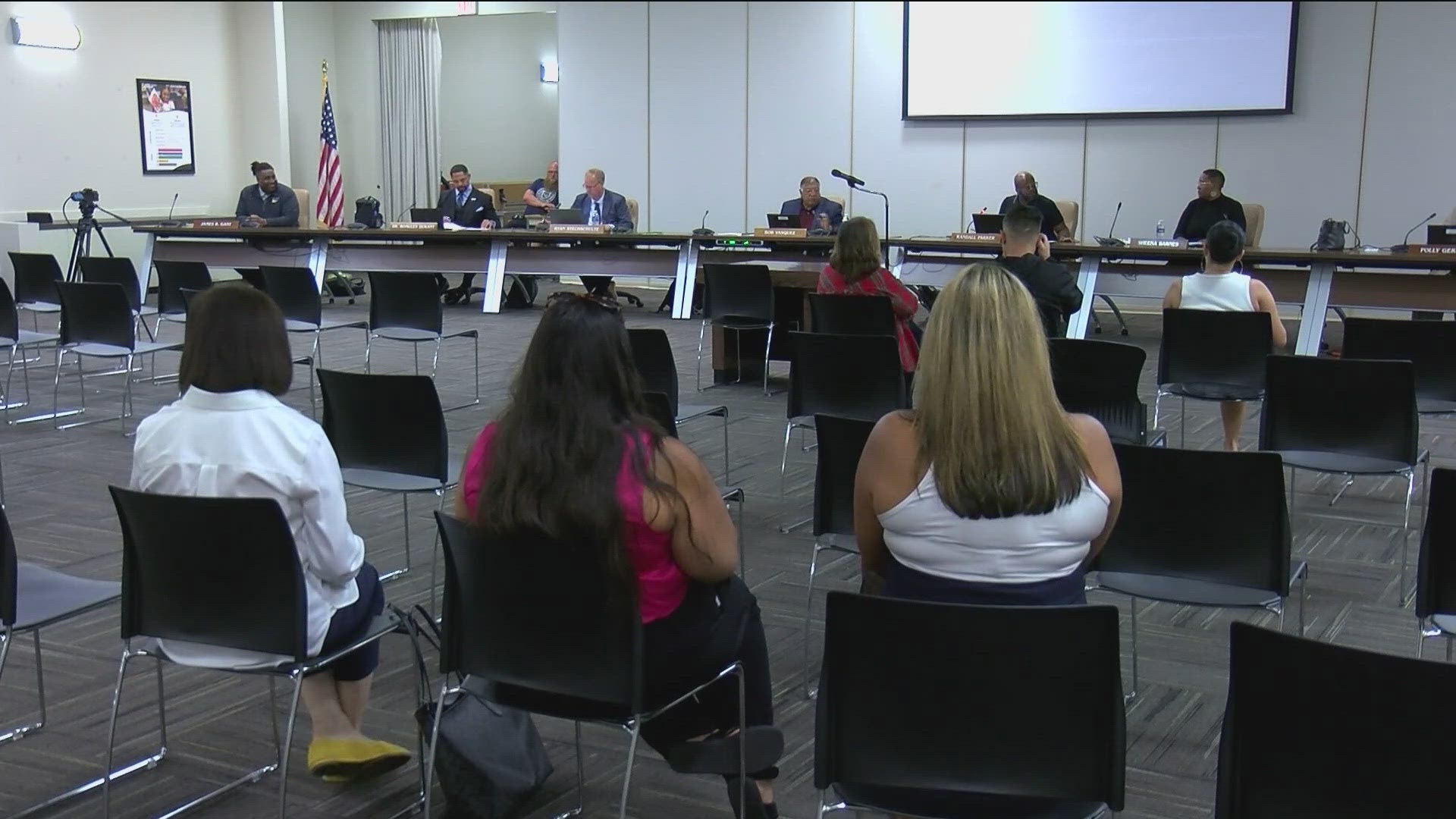COLUMBUS, Ohio — Ohio is one of seven states that elects state supreme court justices based on partisan elections — which can impact voters and campaign finance dollars. This is a new change, with Ohio Republican lawmakers adding party labels to the races starting in 2022.
However, partisan elections are “a difficult fit for judges,” said Michael Milov-Cordoba, counsel for The Brennan Center for Justice at NYU Law.
“Legislators are changing the types of elections … to obtain a political advantage one way or another,” he said. “State courts are all deciding more significant national issues than they were in the past.”
Nonpartisan elections are used in 14 states for state supreme court races and another 14 use what’s called “merit selection,” a sort of job application process where candidates apply for a vacancy in the judicial system in a state, a nominating commission reviews the applications and makes a recommendation to the governor or other appointing entity, according to The Brennan Center.
The rest of the states use either gubernatorial or legislative appointment, or a hybrid selection process. Ohio switched from nonpartisan to partisan supreme court elections in 2021.
Something else that has changed along with the new partisanship in the race is the money involved.
“What we’re seeing in the past few cycles is an unprecedented amount of outside spending in judicial candidate races,” Milov-Cordoba said.
About 9% of donations to the six Ohio Supreme Court candidates totaling more than $365,000 have come from outside of Ohio as of Sept. 19, according to 2023 and 2024 campaign donations posted on the Ohio Secretary of State’s website.
Incumbent Democratic Justice Michael P. Donnelly is being challenged by Republican Hamilton County Court of Common Pleas Judge Megan Shanahan.
Incumbent Republican Justice Joseph Deters, who decided not to run for his current seat, is opting instead to go up against incumbent Democratic Justice Melody Stewart.
Democratic candidate Lisa Forbes, of the Eighth District Court of Appeals, and Republican candidate Dan Hawkins, of the Franklin County Court of Common Pleas, are battling for Deters’ open seat.
The Ohio Supreme Court currently has a 4-3 Republican majority. This election could either flip the court Democratic or Republicans will add to their numbers.
The Democratic candidates have received nearly $272,000 in contributions from outside of Ohio and the Republican candidates have gotten more than $93,000 in out-of-state contributions, as of Sept. 19.
Deters has received the most campaign contributions with more than $909,000 and Stewart has received the least amount of contributions with more than $480,000, as of Sept. 19. About 4% of Deters campaign donations have been from out-of-state, with nearly half of those coming from Florida.
Hawkins has received about $27,400 from out-of-state donations and Shanahan has received about $21,200 in contributions from outside of Ohio, as of Sept. 19. Both of them received the most out-of-state money from Washington, D.C.
Donnelly has received about $98,400 in donations from outside of Ohio, about 16% of his total donations, as of Sept. 19. 16% of Forbes’ campaign contributions has also come from out of Ohio, totaling about $97,300. About 15% of Stewart’s donations (about $76,100 came from outside of Ohio. All three democrats received the most out-of-state donations from New York.
The change in spending for judicial races has been significant over the past 15 to 20 years, said Phillip Marcin, professor of instruction at the Bliss Institute of Applied Politics at the University of Akron.
“Outside groups weren’t spending a lot of money, to the point where they were just low-profile affairs,” Marcin said.
But now that there has been an “explosion of spending” and partisan labels added to the races, Marcin said judicial races are starting to resemble more “political” races, like legislative or congressional races.
Campaigning rules for judicial candidates are different, for example, candidates are restricted from making knowingly false statements about fellow candidates in television ads, and typically ads paid for by judicial campaigns focus on their candidate’s qualities and qualifications.
But changing the elections to include partisan affiliations could have impacts on voters without any effort on the candidates’ part.
Marcin said the ongoing debate on whether or not political parties should be attached to judicial candidates has brought two arguments: supporters of the partisan elections (and increased spending on those races) say if voters turn out specifically to vote for other candidates on the ballot, they are more likely to also vote in judicial elections. This decreases the “roll-off” percentage, or the number of people who vote at the top of the ticket, but ignore down-ballot races and issues.
“(Supporters of partisan elections say) the more campaign spending that happens in judicial races, the more the roll-off decreases,” Marcin said.
During the 2020 election, more than a million Ohioans who voted didn’t vote for a state supreme court justice.
Opponents of partisan affiliations, which has included former U.S. Supreme Court Justice Sandra Day O’Connor, say having to answer to a political party can alter judicial behavior.
“The traditional notion of a judge is that they should be neutral and impartial,” Marcin said.
But if pushed to run in partisan campaigns with donations coming their way, Marcin said research has shown judges can feel “expected to rule in line with the groups that you’ve received money from,” such as increasing sentences to appear “tougher on crime.”
“There’s evidence that judges alter their behavior in order to increase their chances of election,” Marcin said. “…That should be incredibly frightening to everyone.”
This could be a problem because of the impact judicial races have on the long term future of not just the state, but also the country as a whole.
“There used to be a lot of issues that were more federal in nature, but on some of these issues the United States Supreme Court has said we’re not really going to deal with these things anymore, we’re going to leave these to the state,” Marcin said.
Some of these issues include redistricting and abortion – which was sent back to the states in the Dobbs decision – both of which are hot issues in Ohio with 2023’s Issue 1 that enshrined reproductive rights in the Ohio Constitution, and this year’s Issue 1, which seeks to constitutionalize redistricting reform.
The Ohio Supreme Court has also already been asked to rule on various issues having to do with the reproductive rights amendment and state laws regulating abortion, along with redistricting maps by the Ohio Redistricting Commission, and summary language for the redistricting reform proposal.
“Now, the states are much more influential on these issues that are going to impact thousands, hundreds of thousands of people,” Marcin said.
-
This story is published under a Creative Commons License from the Ohio Capital Journal. You can read the original here.



